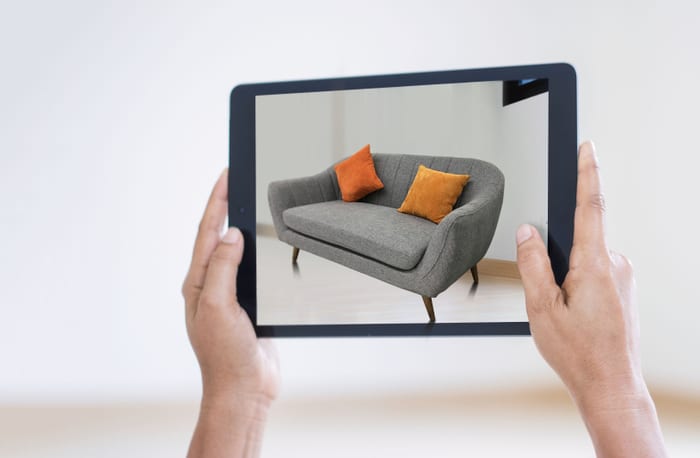
As consumers get more visual, so, too, does retail, and that is helping to fuel some significant innovation.
Indeed, 3D mapping stands as one of the latest ways that spatially focused technology promises to improve the retail experience.
According to a report from AdWeek, this “technology is so new that publicly explained use cases are hard to find, even though 3D mapping’s potential is huge. Going forward, here are a handful of ways retailers can apply the technology to increase sales.” Among them? Using the technology to “rethink store designs,” and determining “how shoppers move around a store at a granular level (in order to) conceptualize how spaces can be optimized. These ideas will create better-located product displays and situate fitting rooms where people can easily find them.”
3D Modeling
The technology can also enable retailers to “use their 3D modeling to offer interactive store maps for customers and employees to use. These maps can be on a touchscreen in the store or on a brand’s mobile app. Store reps will aid customers more efficiently, and the 3D map-powered app can help train employees about the ins and outs of a store and the location of its products.”
Furniture and home decor shopping can sometimes be a long process of visiting store after store to find just the right piece. Sometimes even when furniture is purchased and consumers get it home, the piece doesn’t quite look right in its intended room. All of that provides an opportunity for visual innovation.
Online home renovation and design company Houzz is looking to revolutionize this process with the launch of its View in My Room 3D augmented reality (AR) offering. Through this new app, iPhone and iPad users will have the ability to see more than 300,000 furniture and decor products via the Houzz Shop in 3D. With this new AR app, consumers will be able to visualize the pieces in their home with the help of augmented reality, taking “try before you buy” to the next level in furniture and home decor shopping.
Other Visual Moves
More broadly, retailers are embracing the visual when it comes to innovative efforts to win over shoppers.
When it comes to AR, for instance, you can count on more efforts in the new decade thanks to the fledgling deployments of 5G mobile network technology.
“Retailers like to vaunt their forays into augmented and virtual reality, but current 4G connectivity isn’t fast enough to scale these capabilities to all mobile users,” is how one recent analysis puts it. “Many AR experiments are still considered proof of concept, but standardizing 5G will undoubtedly accelerate the mainstreaming of connected retail.”
The focus of a good deal of those AR efforts will no doubt come down to the omnichannel experience – that is, augmenting, if you will, the in-story experience for digital- and mobile-minded consumers.
“Above all, in-store AR adds a visual context to the purchasing experience,” the analysis states. “A customer can hover their smartphone over a product and see product information such as ingredients, ratings and instructions projected onto their screen.”
Already, retailers, telecoms and others are mapping out that 5G AR future (and beyond). For instance, South Korea’s SK Telecom and retail conglomerate Shinsegae Group have joined forces on 5G retail. They plan to develop new business models and services centered around 5G technology.
The recent deal calls for the companies to develop what a report called “5G-based business models that can be applied to Shinsegae’s department stores and discount store chain E-Mart as well as various shopping malls.” That effort will apparently involve virtual reality (VR) along with AR. The plan is to use VR technology to enable consumers to shop via digital platforms instead of inside brick-and-mortar locations, although no further details were immediately available.
Expect more such moves in the retail world over the next few years.